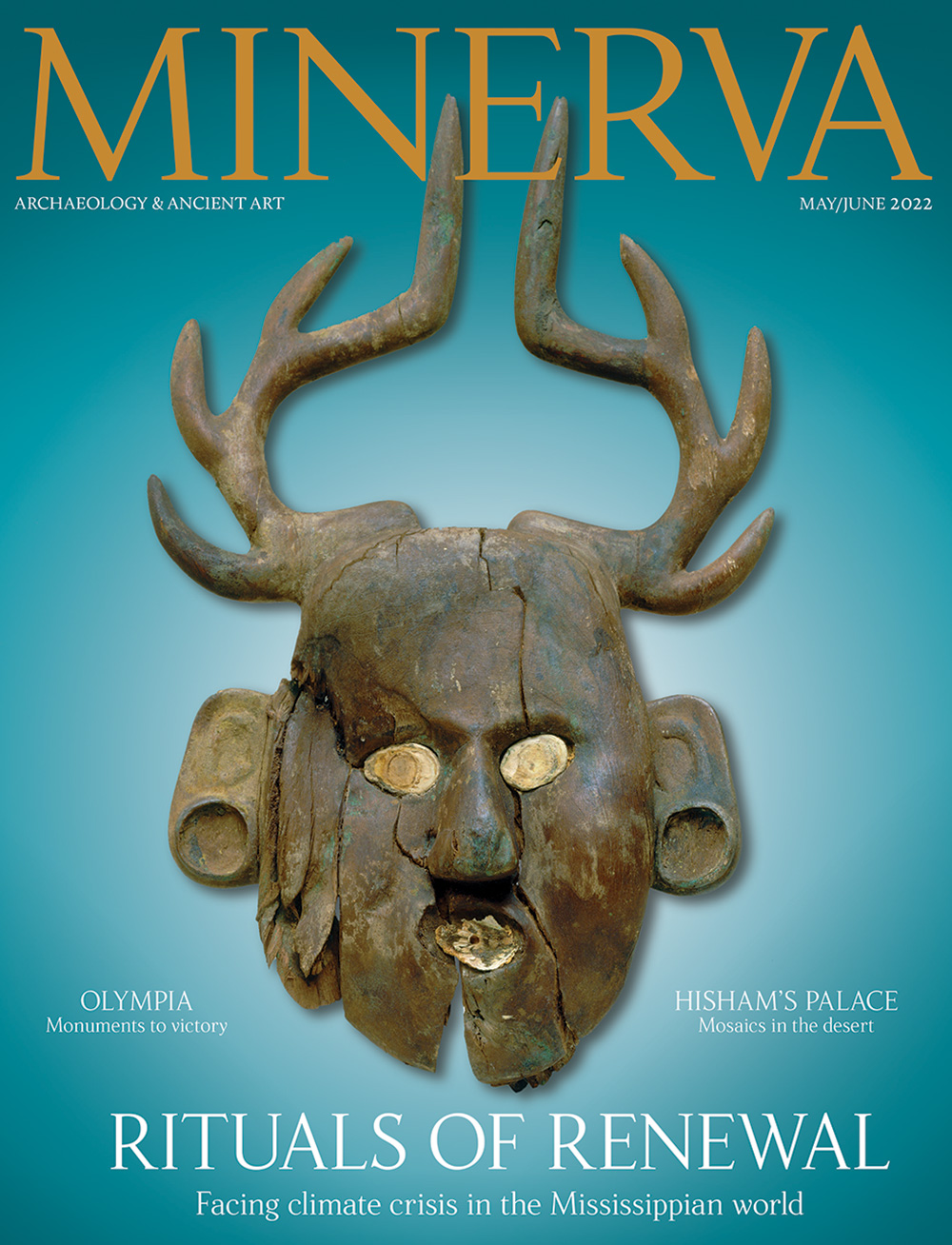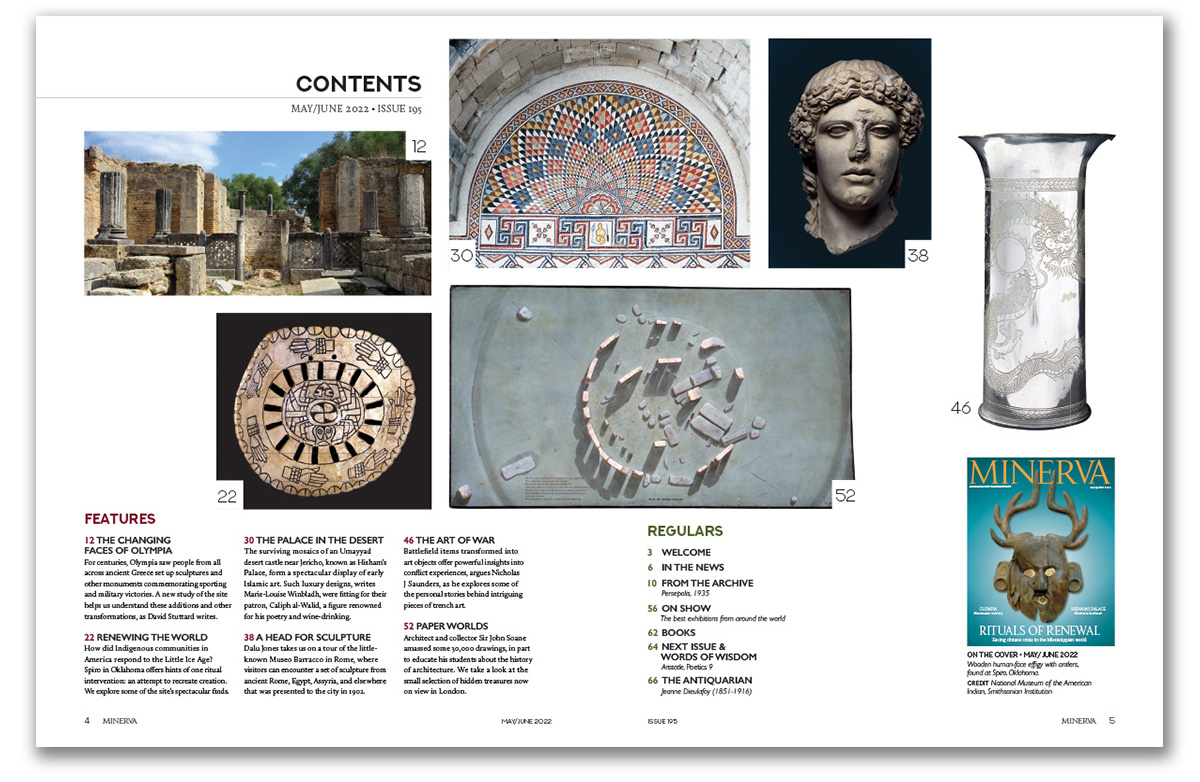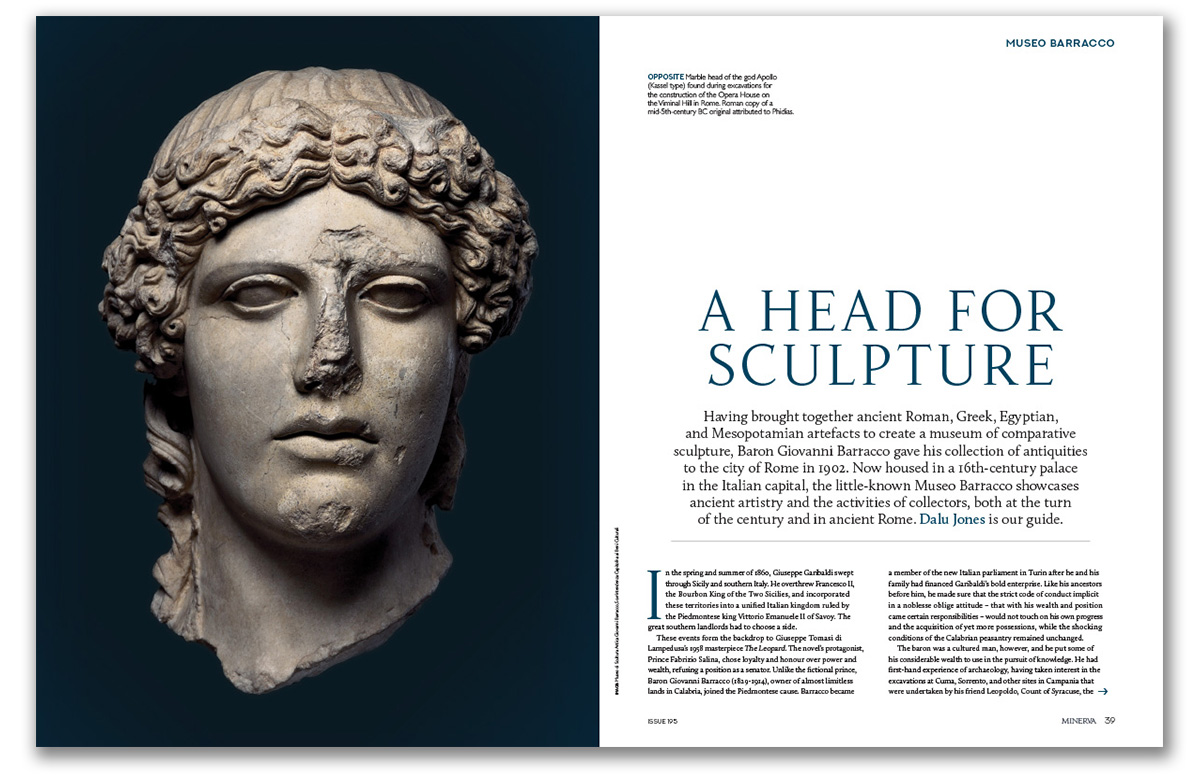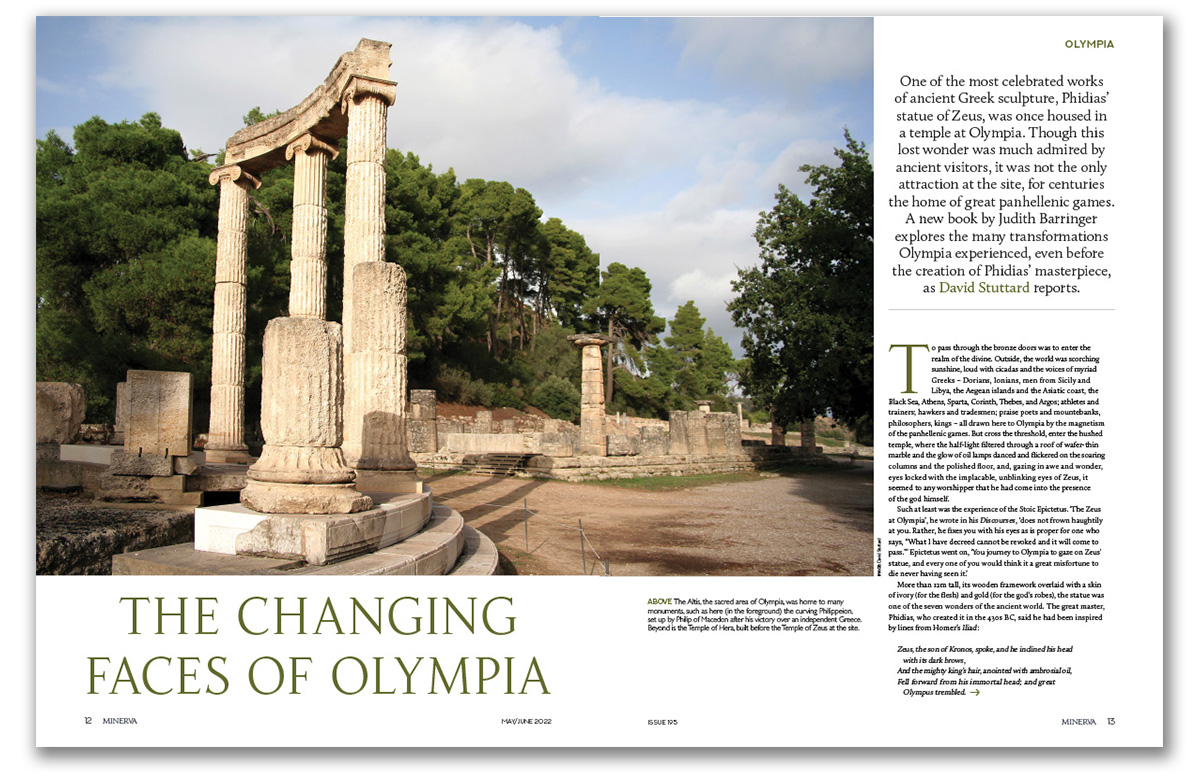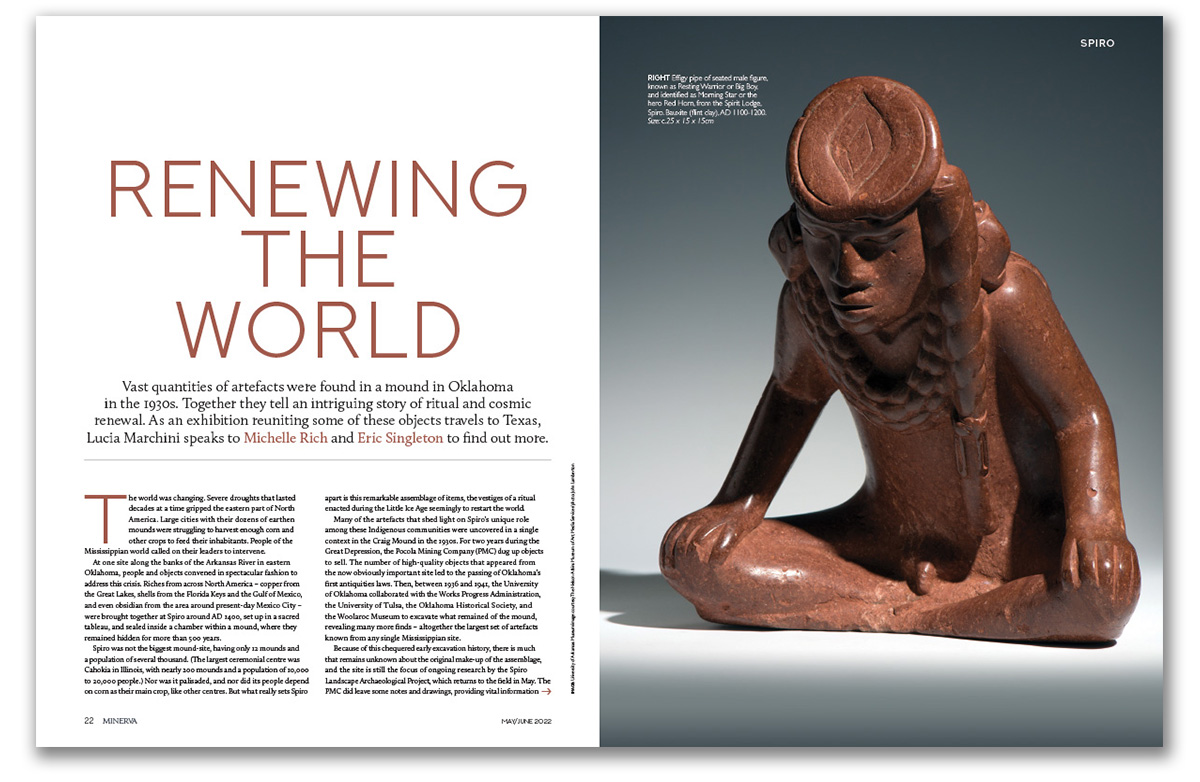Around AD 1400, during a period of lengthy droughts, a remarkable event took place at Spiro in Oklahoma. People at the Mississippian ceremonial centre had dug into one of its mounds, moved their ancestors’ burials, and built within the mound a hollow chamber, where they then placed an elaborate array of riches in wood, shell, copper, textiles, feathers, stone, and rock crystal. Among them was the stunning antlered-mask that adorns our cover. This object and some of the other finds from the site have been reunited for a touring exhibition that is now at its final stop, the Dallas Museum of Art, but why were they all sealed away inside a mound 600 years ago?
Spiro was clearly important to Mississippian society, and other cities had been sending objects there for centuries. In a similar vein, Olympia had a central role in the ancient Greek world. It was the home of the famous panhellenic games, drawing Greeks from all over, but also of a range of monuments – sculptures and buildings set up by athletes victorious in the games, and by city-states and kings victorious in conflict and conquest. David Stuttard explores the changing faces of the site, and the lasting legacy of one of its most famous faces in antiquity: that of Zeus, as sculpted by Phidias.
Next, we turn to the spectacular early Islamic mosaics of an Umayyad desert castleoutside Jericho, known as Hisham’s Palace. As Marie-Louise Winbladh writes, the mosaics, recently restored and now open to the public, suited the lavish lifestyle of their patron – not Caliph Hisham, but his wine-drinking, poetry-penning nephew and successor al-Walid.
Like the Umayyad palace, which drew on early Greek, Roman, and Persian design traditions, the intriguing Museo Barracco in Rome draws from ancient art of different cultures. Once the private collection of Baron Giovanni Barracco, this mix of Roman, Greek, Egyptian, Cypriot, Palmyrene, and Mesopotamian sculpture was presented to the city of Rome 120 years ago. Dalu Jones takes us on a journey through this little-known collection.
A little more than a decade after the Baron’s gift to Rome, the First World War broke out. While the practice of trench art – turning objects relating to war into pieces of art – dates back to antiquity, the many examples from the First World War carry particularly powerful stories of personal experiences of conflict, as Nicholas J Saunders writes.
Finally, we take a look at a small selection of the exquisite and delicate drawings architect Sir John Soane collected for his London home, museum, and studio, as part of his vision to educate and inspire his pupils and the architects of the future.

